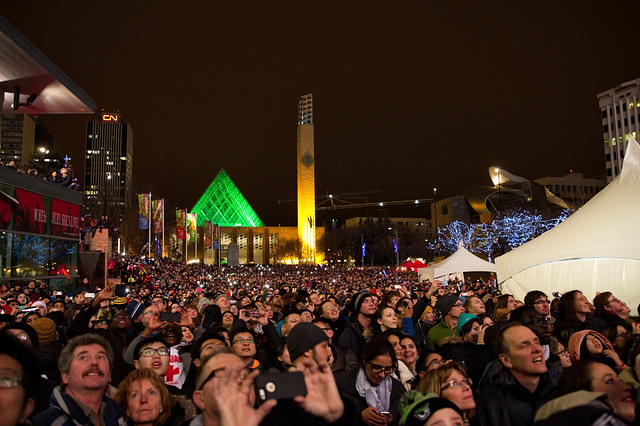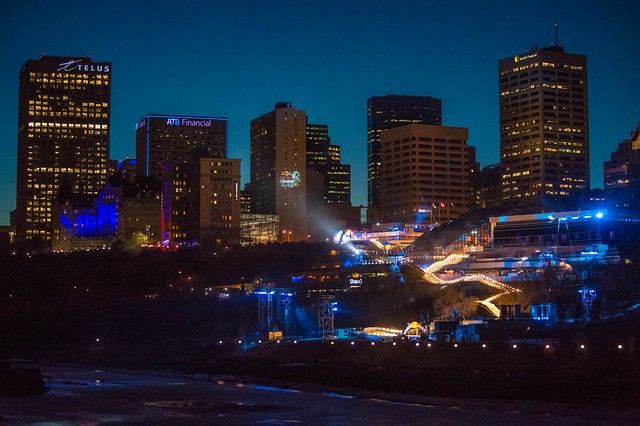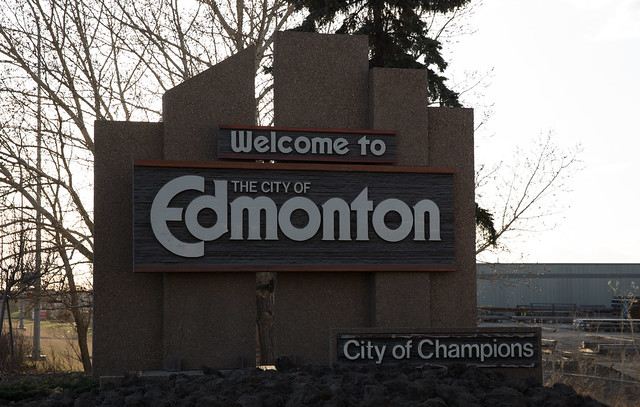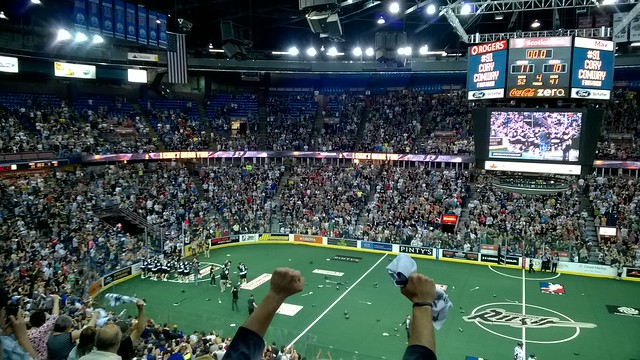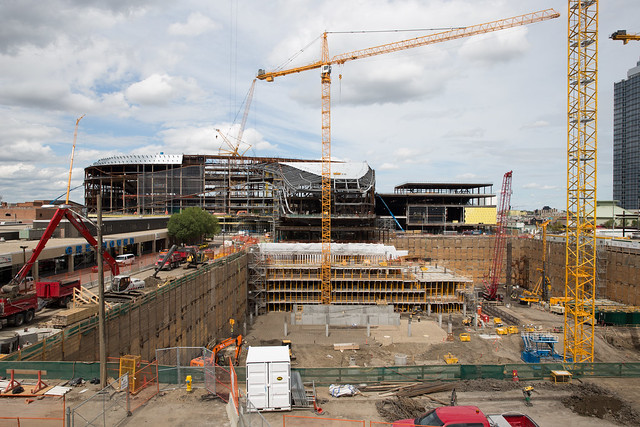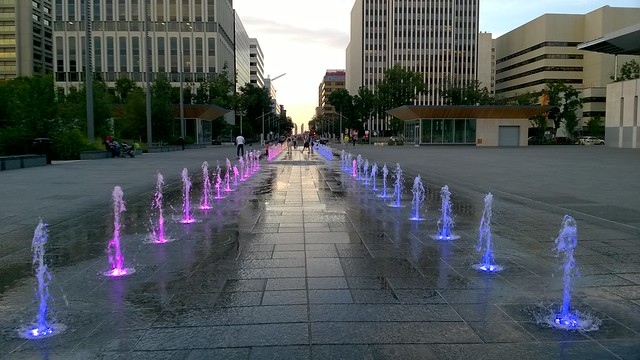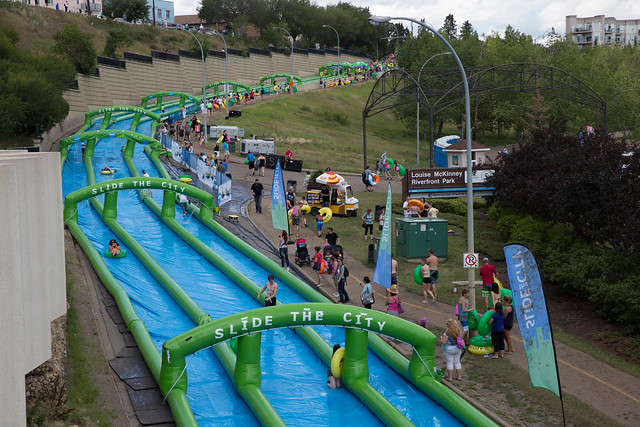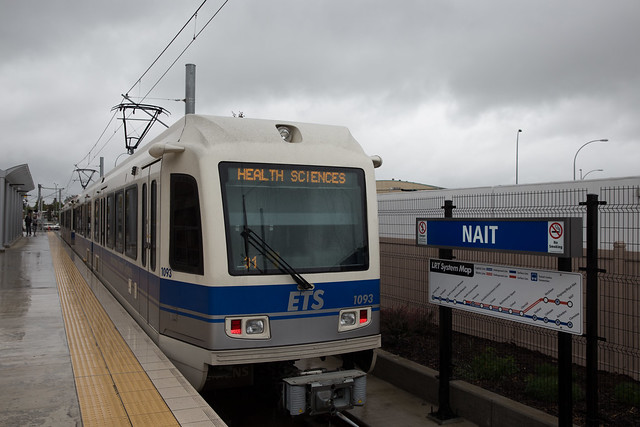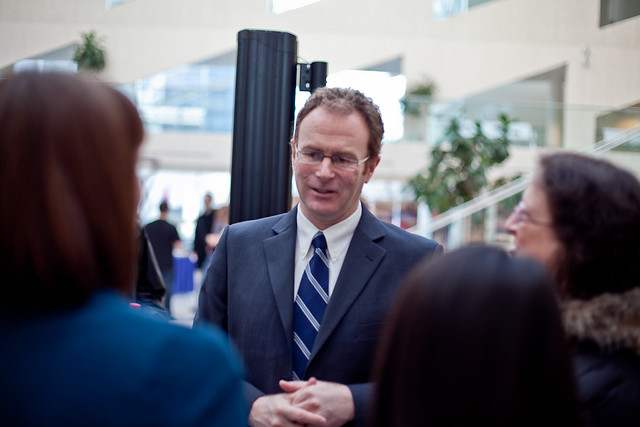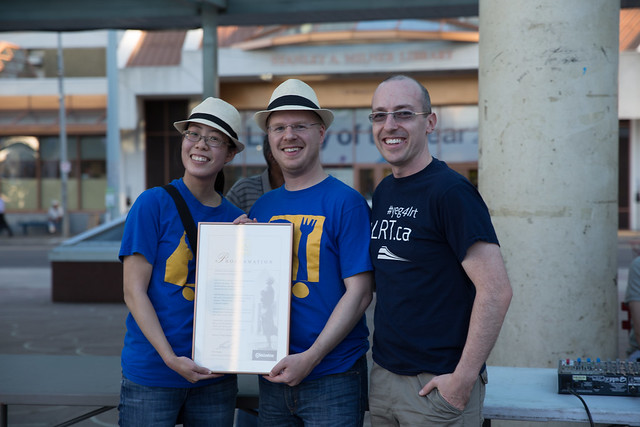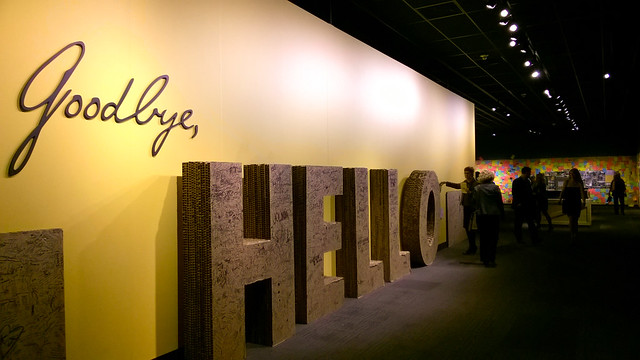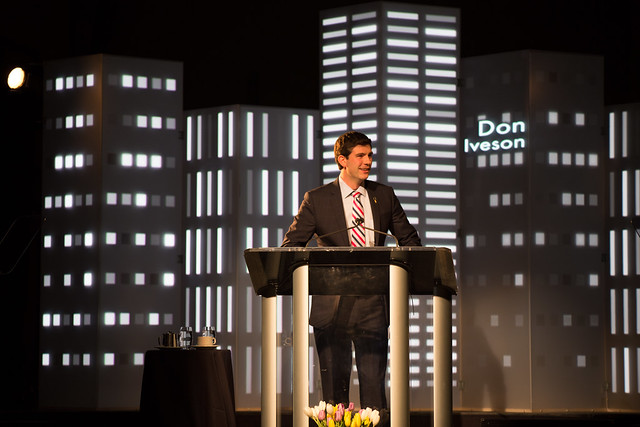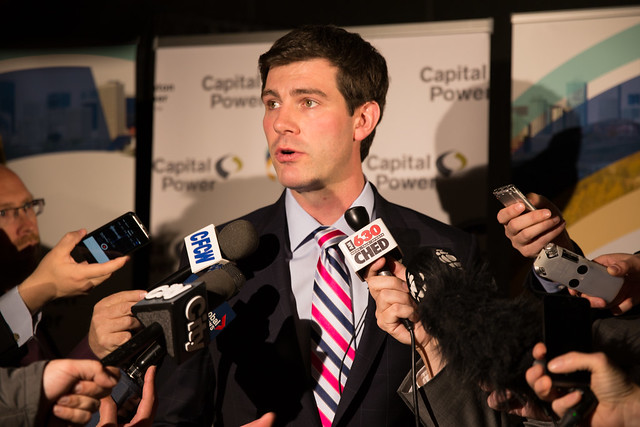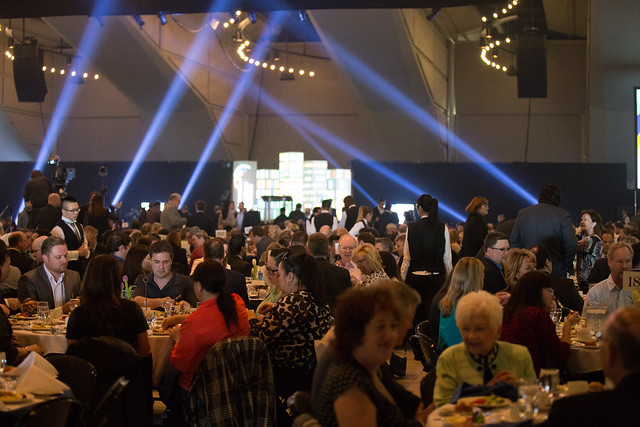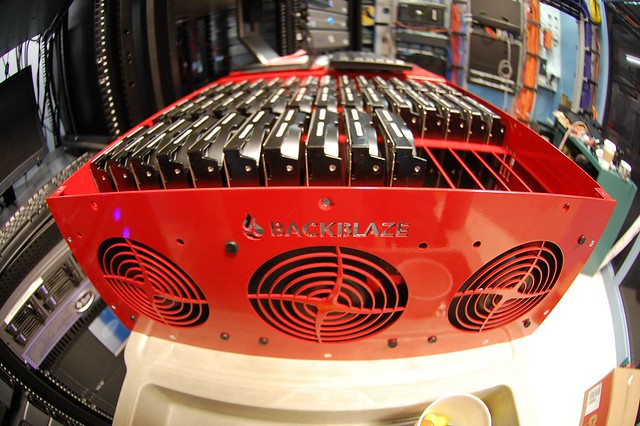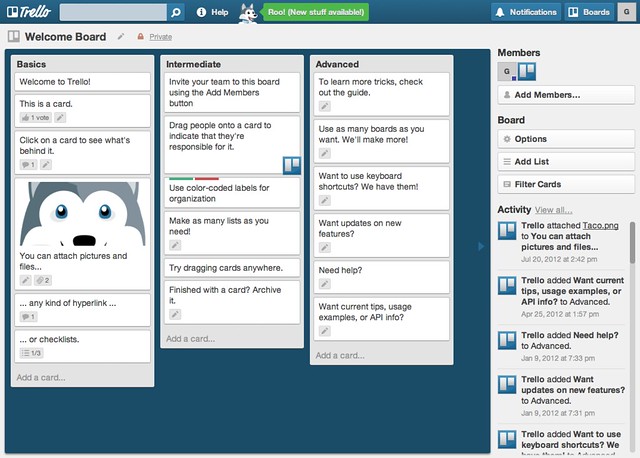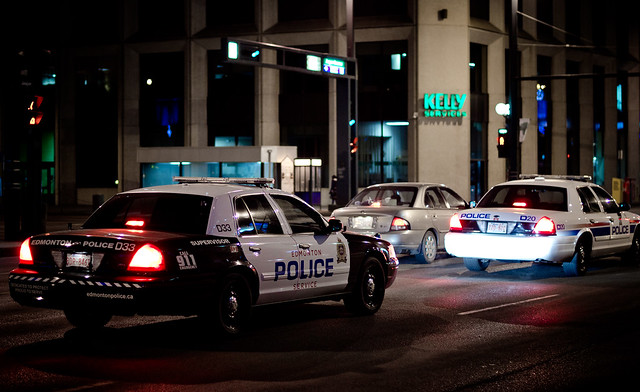In last year’s recap, I wrote:
“I would like for Edmonton in 2015 to capitalize on the energy and momentum that we all can sense in our city. Maybe it needs a bit of structure, maybe it needs a bit of shepherding, or maybe we simply need to better define what “it” is, but whatever approach we take, we cannot let this opportunity pass us by!”
Looking back, I don’t think we succeeded in that. To me at least, 2015 very much felt like an “under construction” year and our city’s story may even be less clear and coherent than it was. The cranes mostly went up in 2014 or earlier and they’re nearly all still up, busily working to complete a growing list of projects. And while lots of energy was spent on defining what Edmonton is all about (or not about), it doesn’t feel like that work is over (maybe it never will be). I think there’s still a sense of optimism present in Edmonton, but it has certainly diminished compared with the past couple of years.
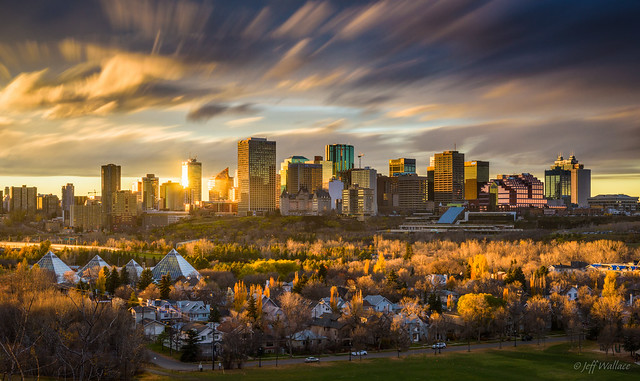
One Chance, photo by Jeff Wallace
I generally dislike when commentators wrap Edmonton’s transformation up with the Oilers, yet I find myself thinking along similar lines. For most, Rogers Place is a proxy for all of the physical change taking place in Edmonton while Connor McDavid represents youth and opportunity for the future. If all goes well, both will be unleashed in 2016. Will Edmonton?
I think 2016 will feel similar to this year, thanks in no small part to the economic downturn. But hopefully at least a few projects get completed successfully and perhaps we’ll even see a shift in our thinking.
For my recap this year I’ve decided to share some brief highlights and photos from 2015. Below that you’ll find a list of year-in-review articles and posts from around the web. I’ll keep adding to the list as I find more. Enjoy!
2015 in Review
Tonight’s fireworks will again be launched from the roof of the Stanley Milner library, so be sure to get to Churchill Square early to get a good view. Remember that ETS is free from 6pm to 3:30am tonight!
The year started off with some sad news, as the historic Roxy Theatre was destroyed by fire on January 13. Later in the month, Edmonton took another step forward in embracing winter by hosting the Winter Cities Shake-up Conference and Festival.
In February we dropped out of the running to host the Commonwealth Games in 2022. There’s some speculation that we’ll put in a bid for 2026 instead.
In early March we successful hosted the Red Bull Crashed Ice finals which saw roughly 70,000 people downtown to take in the festivities. It was a big, flashy, confidence-boosting event for our city. Before the month was over though, #girdergate happened resulting in additional delays for the 102 Avenue Bridge over Groat Road. The project is now expected to be completed in 2016, assuming nothing else goes wrong.
Things got worse for the City in April when it announced that the Walterdale Bridge project would also be delayed until late 2016. When we weren’t talking about the provincial election in April, we were talking about Edmonton’s entrance signs. At the end of the month, the “City of Champions” slogan was removed, but a redesign was put off to another day.
On the sports front in April, the Oilers finally cleaned house with new CEO Bob Nicholson appointing Peter Chiarelli as President & GM. The Oilers also won the first overall pick in the NHL Draft Lottery, the fourth #1 pick in six years.
Of course the big story in May was the NDP victory and Rachel Notley becoming the 17th Premier of Alberta.

Rachel Notley being sworn in, photo by Premier of Alberta
On May 23, we had our first What the Truck?! event of the season, and it was bananas! So many people came out to enjoy the fantastic weather and unofficial kick-off to summer!
On June 5, the Edmonton Rush capped off an amazing tenth year in the NLL by winning the Champions Cup. Then in July, the team announced it was moving to Saskatoon. I’m still disappointed they couldn’t find a way to stay in Edmonton.
Sports fans also celebrated the kickoff to the FIFA Women’s World Cup 2015 in June. Just over 53,000 fans packed Commonwealth Stadium to take in the opening match featuring Canada vs. China. And no surprise here – the Oilers selected Connor McDavid first overall in the NHL Draft at the end of the month.
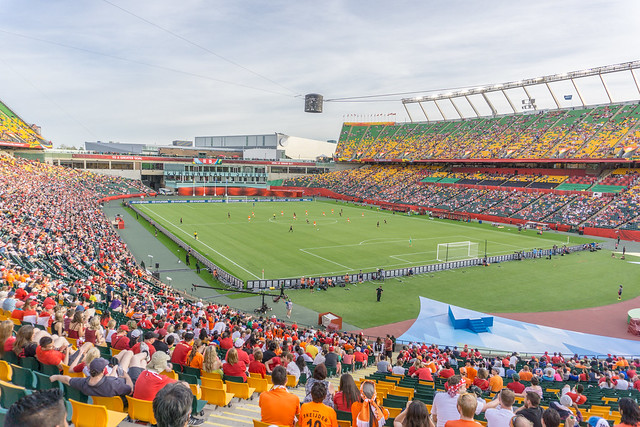
Photo by IQRemix
There was sad news in June too. On June 8, Constable Daniel Woodall was shot and killed while executing an arrest warrant in the west end. He was the first EPS officer killed since Constable Ezio Faraone was shot on June 25, 1990.
In July, the Oilers unveiled the name of the area surrounding Rogers Place: Ice District, drop the “the”.
They also opened a presentation centre so that fans could get a look at what the inside of Rogers Place will be like when it opens in time for the 2016-2017 NHL season.
Lots of Edmontonians enjoyed the new Centennial Plaza at the redeveloped Federal Building throughout the summer, thanks in large part to the colorful fountains. It’s just too bad the space isn’t more winter-friendly. Maybe in 2016?
We also had some water activities with Slide the City on the weekend of July 18-19. Look what fun can be had when you close down a street!
The Metro Line LRT dominated the discussion in August, and it finally opened on September 6! It still isn’t working completely as planned, but it’s better than not running at all.
In early September, Mayor Iveson and City Council made the decision to fire City Manager Simon Farbrother. They said it wasn’t because of the bridge and LRT debacles, but that had to be a key factor. Change at the City continued throughout the fall, and there’s more to come in 2016.
We wrapped up our successful year of food truck festivals on September 11 with the final What the Truck?! event of the season. That day was also proclaimed food truck day in Edmonton to celebrate!
Also in September, our city came together to support Spider-Mable, probably the feel-good story of the year.
Justin Trudeau became our new Prime Minister in October, and in early November Amarjeet Sohi was named Minister of Infrastructure & Communities. It was a big loss for Council, but great news for municipal representation in the federal government.

Photo by Premier of Alberta
At the end of November, the Edmonton Eskimos won their 14th Grey Cup, defeating the Ottawa RedBlacks. Just over a week later, head coach Chris Jones jumped ship for Saskatchewan.

Photo by Edmonton Eskimos
Edmonton said goodbye to the current Royal Alberta Museum on December 7. The new building isn’t expected to open until late 2017, though construction seemed to progress swiftly this year.
And just a couple weeks ago, the EndPoverty Edmonton strategy was unanimously approved by City Council. There’s a lot of work still to do, but this is a positive step forward.
Other 2015 Recaps
Here are some other 2015 recaps I’ve found:
- Top Stories of 2015 in Edmonton by Edmonton Journal
- Year in Review by Edmonton Journal
- 2015 was a great year for Progressive Politics in Alberta by Daveberta
- Rear End in View: Stick a fork in it by GigCity
- Edmonton’s top 10 stories of 2015 by Global Edmonton
- Hicks’ Weekly Dish: Food memories of 2015 by Edmonton Sun
- Mayor looks back at highs and lows for 2015 by 630 CHED
- CBC Edmonton’s most viewed stories from 2015 by CBC Edmonton
- CBC Edmonton’s most viewed videos from 2015 by CBC Edmonton
- City Hall in 2015 was dominated by frustrating, seemingly endless battles by CBC Edmonton
- Edmonton’s top animal stories of 2015 by CBC Edmonton
- Edmonton’s best restaurants 2015 by CBC Edmonton
- Metro Edmonton’s Best of 2015: Photos by Metro Edmonton
- Do you remember Edmonton’s 2015 cultural hightlights? by Edmonton Journal
- 15 Great Things of 2015 by U of A Alumni Association
- Looking ahead and a sincere thank you by OilersNation
- Auto thefts in Edmonton jumped by 13% in 2015 by CBC Edmonton
- Police solved fewer murders in 2015 by CBC Edmonton
- Top 10 most-read stories of 2015 by MacEwan News
- The top 15 stories of 2015 by U of A ExpressNews
- Graham Thomson: 2015 – The year in numbers by Edmonton Journal
- Edmonton’s Best New Restaurant 2015 by WHERE Edmonton
- Recounting some of the highlights of Vue’s 2015 headlines by Vue Weekly
- Edmonton’s Best Restaurants 2015 by Huffington Post Alberta
- Rough spots marked a tough 2015 for #yegarts by Edmonton Examiner
- Goodbye 2015 by Tech Mommy
- 5 Things I Learned in 2015 by Danica LeBlanc
- Goodbye 2015 by Marie a la Mode
- Top Songs of 2015 by #YEGMusicMagazine
- Top 10 Albums of 2015 by #YEGMusicMagazine
- Top 10 Music Videos of 2015 by #YEGMusicMagazine
- 2015; My Year in Review by YEGfoodie
- End of the Year at End of the Earth by GigCity
- 2015 a ‘very trying’ year for Edmonton-area police by Global Edmonton
- Edmonton records 30 homicides in 2015 by Edmonton Sun
- Edmonton’s homicide victims of 2015 by Edmonton Journal
- A year in Edmonton food by Vue Weekly
- Sifting through the theatre trends of 2015 by Vue Weekly
- Top 10 moments that defined 2015 for me by Don Iveson
- Epicureous in Edmonton: 2015 Year in Review by Sharon Yeo
- Top 15 Yegventures Stories of 2015 by Lincoln Ho
Have a link to add? Let me know! You can check out my 2014 recap here.
I’ve been thinking about the year ahead for Edmonton and what it might look like. I’ll have more on that in an upcoming post. For now, let me say Happy New Year and all the best in 2016! Thanks for reading!
